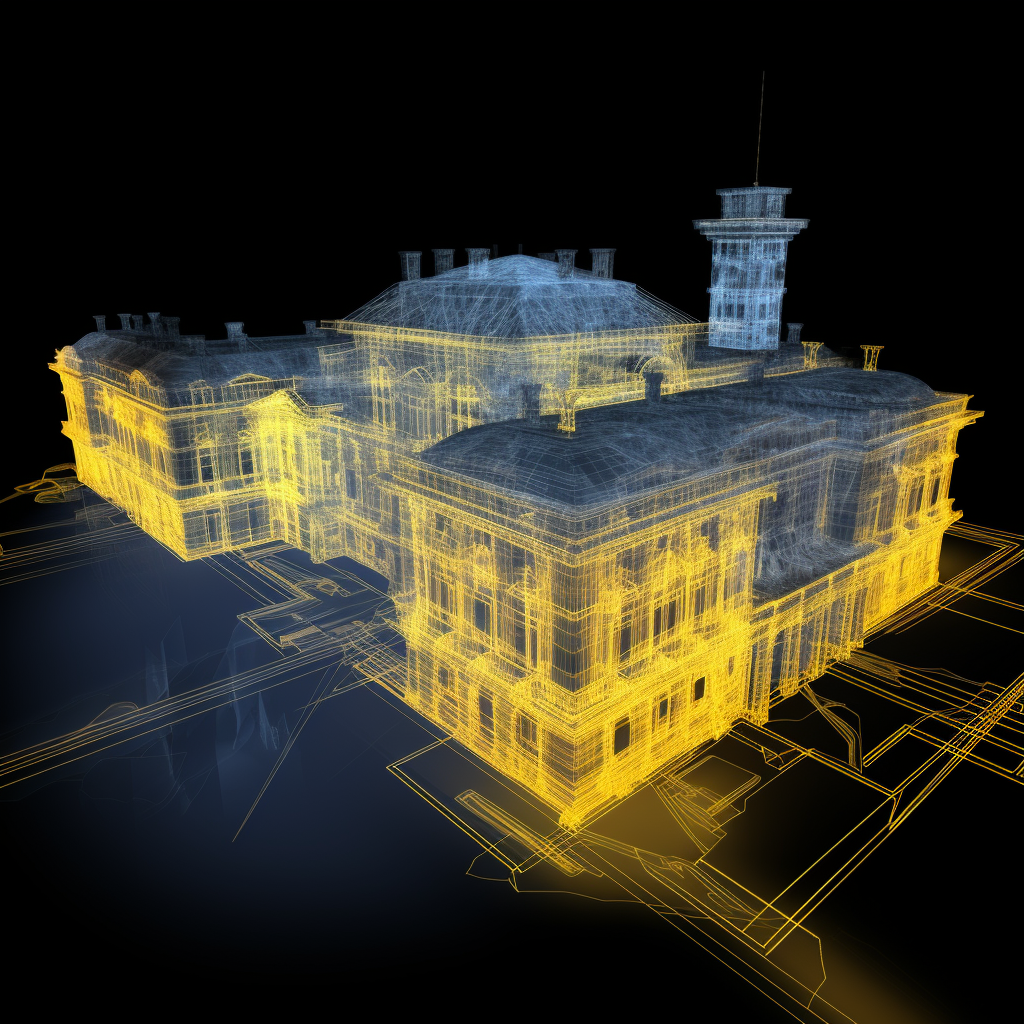
Robotic ImagingOctober 25, 2023
The advancement of technology has continuously reshaped and revolutionized various industries, and the architecture and construction sector is no exception. One such game-changing innovation that has transformed the way buildings are designed and constructed is LiDAR (Light Detection and Ranging). LiDAR technology, with its ability to capture precise and detailed data in 3D, has revolutionized the architecture and construction industry in more ways than one.
Suggested reading: If you want to learn about point clouds, a critical aspect of the scan-to-BIM process, check out this article.
The Invention of LiDAR
LiDAR was first invented in the early 1960s, with its roots deeply embedded in the field of remote sensing. Its earliest use was primarily in military and aerospace applications, where it was utilized to accurately measure distances and map terrains. However, it was only in recent years that LiDAR technology has gained significant popularity and widespread adoption in the architecture and construction industry.
How LiDAR Works
LiDAR works by emitting rapid laser pulses and measuring the time it takes for those pulses to bounce back after hitting objects in its path. By calculating the round-trip travel time, LiDAR systems can accurately determine the distance to objects and create precise 3D models of the surrounding environment. These models are obtained by scanning thousands of laser pulses per second, capturing data points at an incredibly high resolution.
Revolutionizing Architecture and Construction
The use of LiDAR technology has brought about a multitude of benefits and revolutionized the way architectural projects are designed, planned, and constructed. Let's explore some of its significant impacts:
1. Enhanced Surveying and Mapping
Traditional surveying methods often involved manual measurements, which were time-consuming and prone to human errors. LiDAR has significantly transformed this process, making it more efficient and accurate. By capturing detailed point cloud data of the site, it allows architects, engineers, and construction professionals to create precise and reliable topographic surveys and site models.
2. Improved Planning and Design
LiDAR enables architects and designers to seamlessly integrate accurate 3D information into their planning and design processes. The high-resolution data obtained through LiDAR scans provides an in-depth understanding of the existing site conditions, facilitating informed decision-making. It allows architects to design with more precision, reducing the chances of errors and unexpected surprises during construction.
3. Streamlined Building Information Modeling (BIM)
Building Information Modeling (BIM) has become an integral part of the architecture and construction industry. By combining LiDAR technology with BIM, professionals can create highly detailed and accurate digital representations of buildings and infrastructure. The integration of LiDAR scans into BIM software allows for better visualization, clash detection, and accurate quantity take-offs, ultimately leading to improved project coordination and cost control.
4. Enhanced Safety and Risk Reduction
During the construction phase, LiDAR technology contributes to enhancing safety and minimizing risks. By utilizing LiDAR scanners mounted on drones, construction sites can be regularly monitored, reducing the need for manual inspections in hazardous areas. LiDAR can also detect and provide detailed analysis of potential hazards, such as structural irregularities or deformations, thereby preventing accidents and ensuring the safety of workers.
Future Possibilities
LiDAR technology continues to evolve, with ongoing advancements in hardware and software. The potential applications and benefits for the architecture and construction industry are immense. As LiDAR systems become more affordable and accessible, it is expected that the technology will be more widely adopted, further transforming the industry.
Some future possibilities include real-time monitoring of construction progress, automated quality control, and augmented reality integration. LiDAR combined with other technologies, such as artificial intelligence and machine learning, has the potential to bring forth even more advanced solutions for architecture and construction professionals.
To conclude, LiDAR has revolutionized the architecture and construction industry by introducing accurate and efficient methods for surveying, planning, design, and construction. The precise 3D data obtained through LiDAR technology has improved project coordination, reduced risks, and enhanced overall efficiency. As technology advances further, the industry can look forward to even more advancements, making LiDAR an indispensable tool for architects, engineers, and construction professionals alike.
